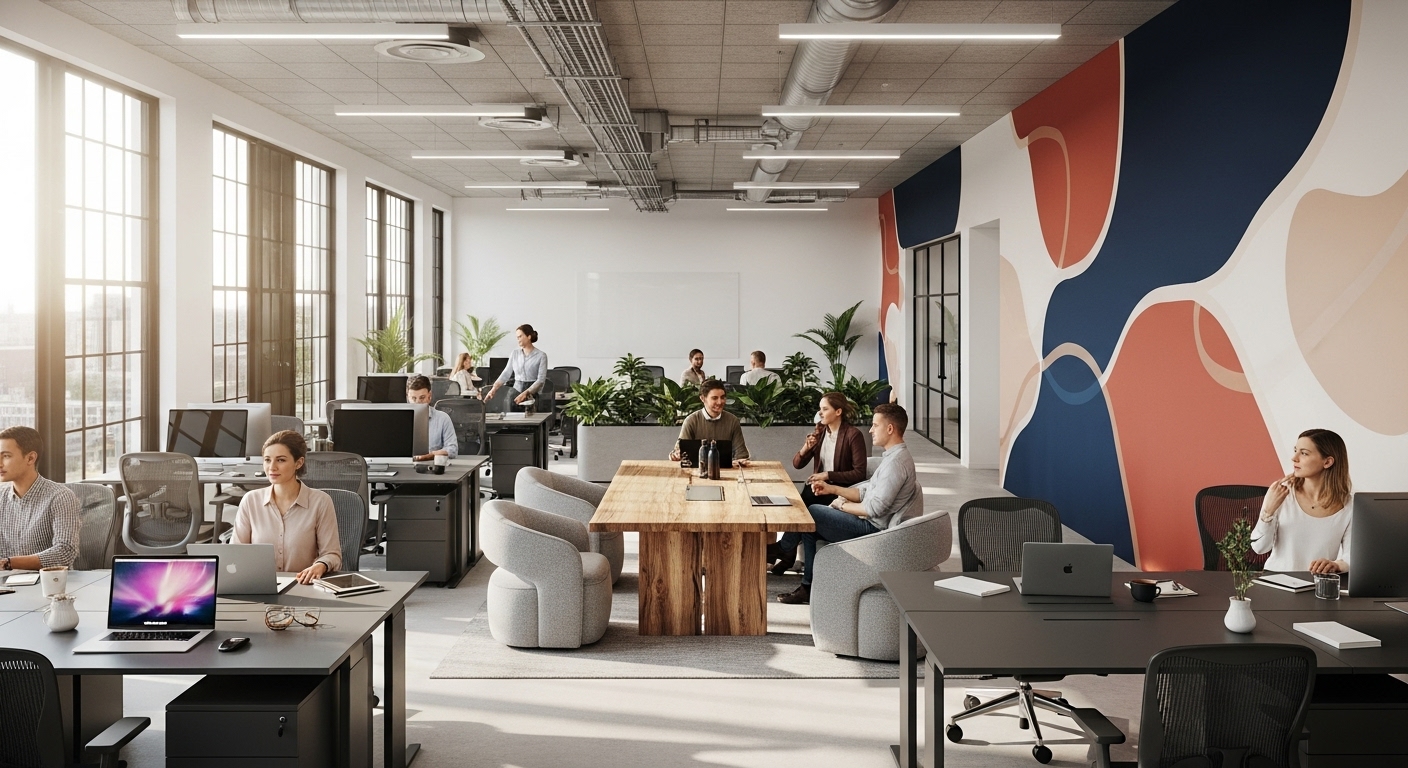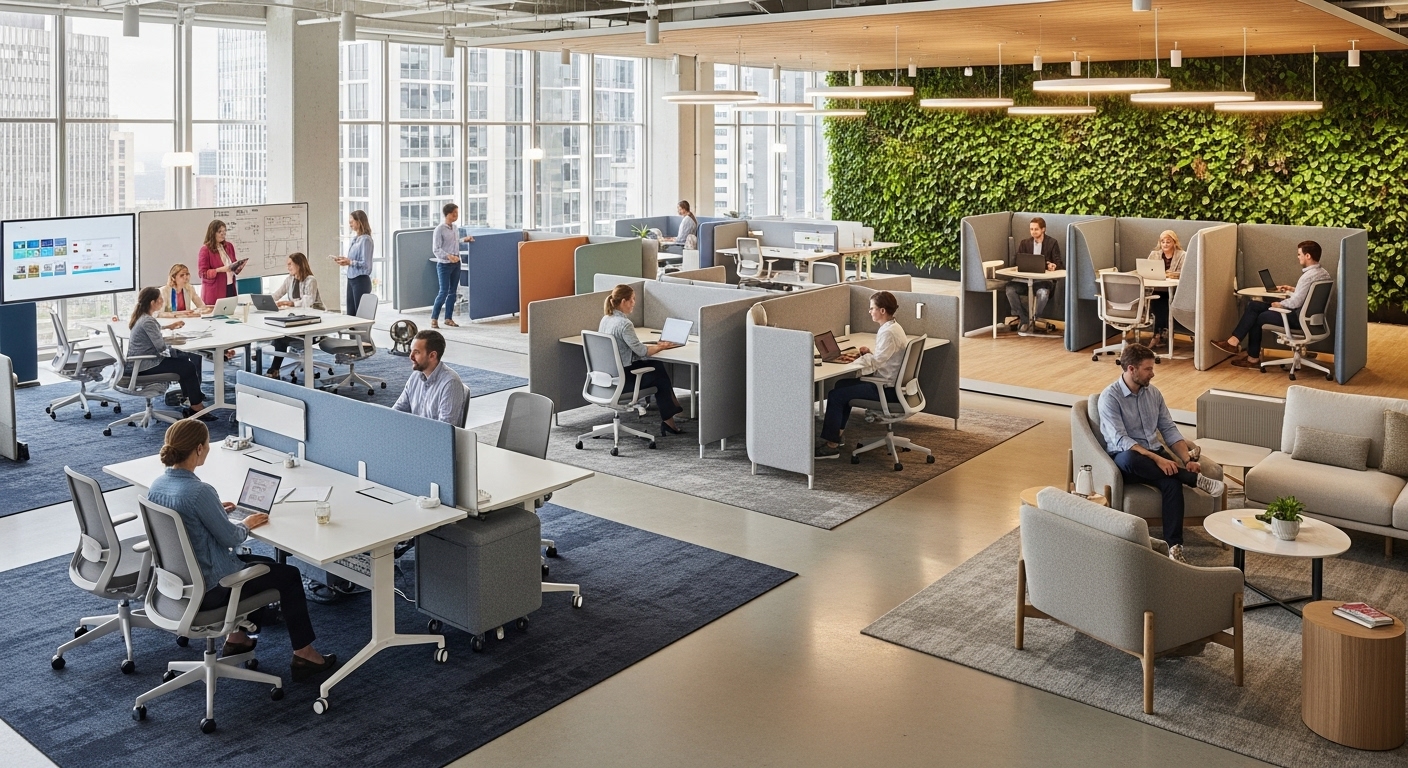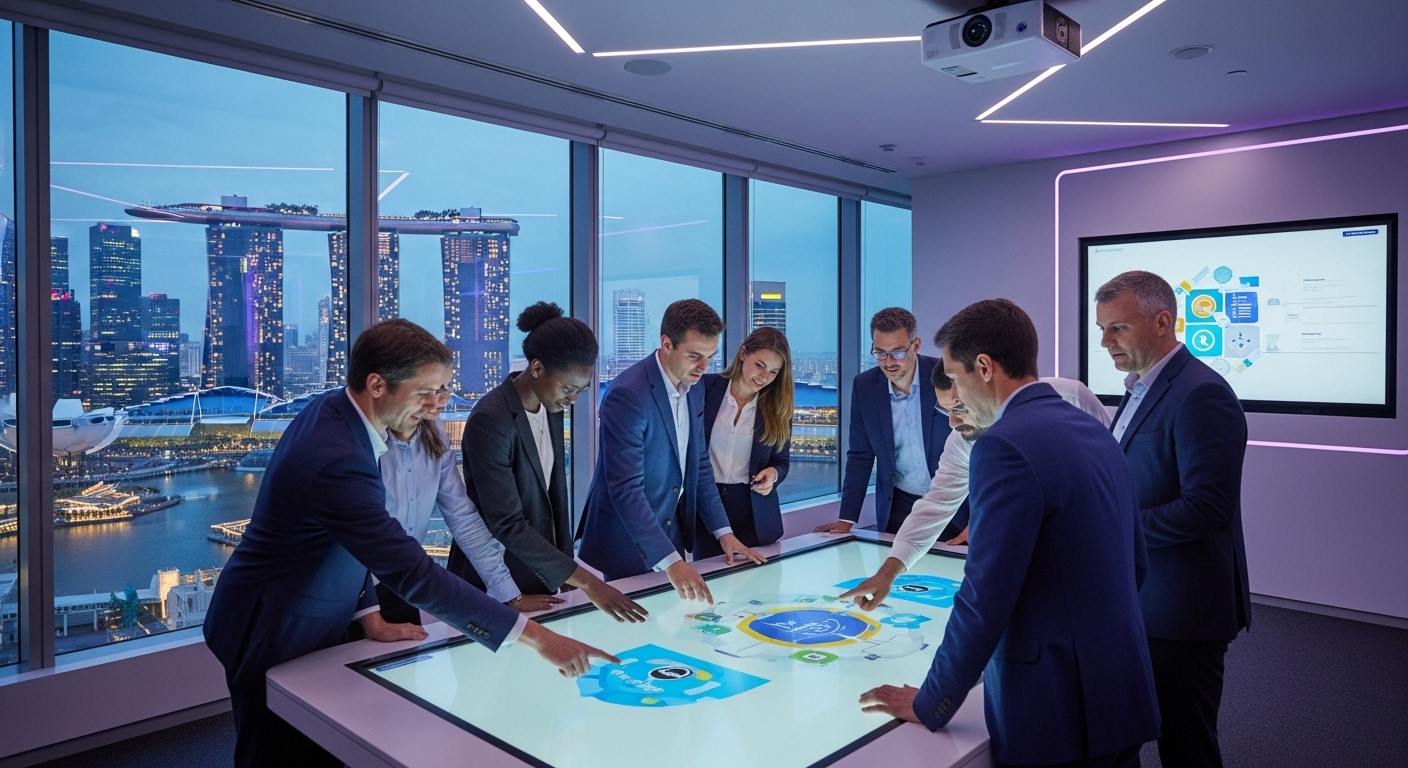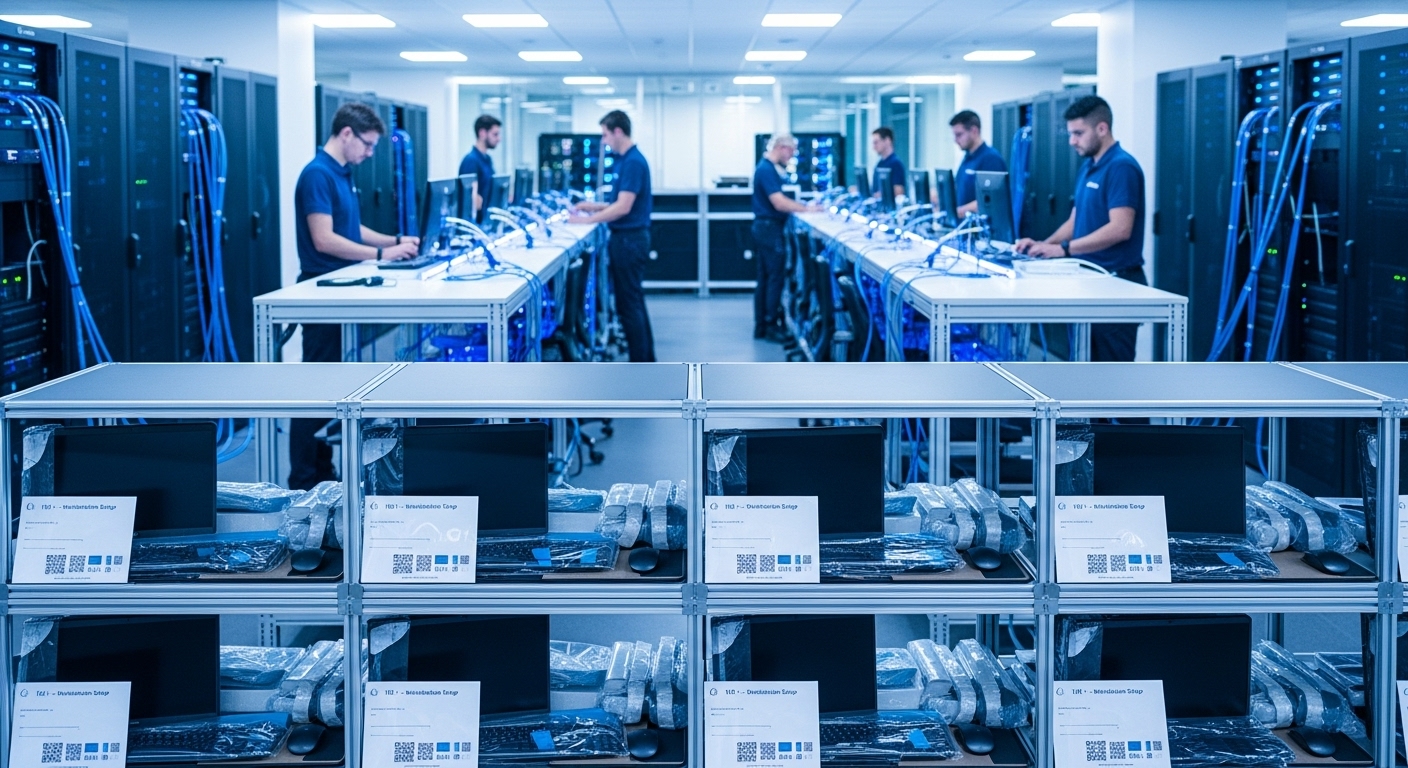In the world of business, branding is often confined to logos, color palettes, and marketing campaigns. But what about the physical space where your team spends its time? Too often, office design is an afterthought, a generic assembly of desks and chairs. This approach misses a critical opportunity. Your workspace is not just a container for work; it is a powerful, three-dimensional expression of your brand’s identity, values, and culture. As companies navigate the new era of hybrid work, the office has transformed from a daily requirement into a cultural destination. It’s the place where teams gather to connect, collaborate, and immerse themselves in the company’s mission. Therefore, intentionally branding your space has never been more vital. This guide moves beyond surface-level decoration, providing a practical framework for translating your abstract core values into the concrete reality of your office design, ensuring your environment doesn’t just house your brand, but actively amplifies it.
Decoding Your Brand DNA: The Foundation of Spatial Design
Before selecting a single paint swatch or piece of furniture, the first and most critical step is to deeply understand and articulate your brand’s core DNA. This process goes far beyond your mission statement; it requires a forensic examination of your company’s values, behaviors, and aspirations. Is your culture built on disruptive innovation, meticulous tradition, transparent collaboration, or heads-down individual focus? Each of these attributes has a direct spatial translation. Start by hosting workshops with leadership and team members to codify these values. Ask probing questions: How do we want our employees to feel when they walk in? What message should our space send to a visiting client or a potential new hire? The goal is to create a set of design principles derived directly from your cultural identity. For example, a core value of ‘transparency’ might translate into architectural choices like glass walls, open sightlines, and communal data dashboards. A value of ‘sustainability’ could be expressed through the use of reclaimed wood, living green walls, and energy-efficient lighting. This foundational step ensures that every subsequent design decision is not arbitrary but is instead a deliberate reflection of who you are as a company. It transforms your office from a simple building into a strategic asset that reinforces your culture every single day.
The Psychology of Color and Materials: Setting the Emotional Tone
Once you have a clear blueprint of your brand’s values, you can begin to translate that identity into a tangible, sensory experience. Color and materials are your primary tools for setting the emotional tone of the workspace. This isn’t merely about splashing your logo’s hex codes on the walls; it’s about leveraging the deep psychological impact these elements have on human perception and mood. A color palette should be a strategic extension of your brand’s personality. For instance, blues and greens often evoke feelings of calm, trust, and stability, making them suitable for finance or health tech companies. In contrast, vibrant yellows and oranges can stimulate energy and creativity, ideal for a dynamic startup or a marketing agency. The materials you choose are equally potent storytellers. Polished concrete floors, exposed ductwork, and raw metal finishes communicate an industrial, edgy, and innovative spirit. Conversely, the use of warm woods, soft textiles, and plush carpeting can create an atmosphere of comfort, approachability, and welcome. Think about the message a reclaimed timber feature wall sends about your commitment to sustainability versus the message sent by a wall of sleek, imported marble. Every surface, texture, and hue should be a conscious choice, working in concert to create a cohesive environment that makes your brand values felt, not just seen.
Layout as a Language: Designing for Your Desired Workflows
The physical layout of your office is one of the most powerful and often overlooked branding statements you can make. A floor plan is not just a logistical arrangement of desks; it is a language that communicates your company’s priorities and dictates how your team interacts. The decision between an open-plan layout, private offices, or a hybrid model speaks volumes about your culture. A sprawling, open-plan space with numerous collaborative zones implicitly encourages spontaneous interaction, cross-departmental synergy, and a flat hierarchy. This layout actively tells employees, ‘We value open communication and teamwork.’ In contrast, a design that prioritizes private offices or semi-enclosed pods sends a clear message that the company values deep, focused work and individual concentration. The most effective modern designs often employ a ‘zoning’ strategy, creating a diverse ecosystem of spaces within a single office. This might include a buzzing, café-style social hub for informal gatherings, dedicated project rooms with whiteboards for brainstorming, library-like quiet zones for focused tasks, and private wellness rooms for decompression. By designing for a variety of workflows, you demonstrate a holistic commitment to employee well-being and productivity, reflecting a brand that is adaptable, employee-centric, and sophisticated in its understanding of modern work.
Furnishing with Intent: Beyond Ergonomics to Brand Expression
Furniture is a fundamental component of any office, but its role extends far beyond simple function and ergonomics. Every chair, desk, and table you select is a piece of the narrative you are building. Choosing furniture with intent is crucial for reinforcing your brand identity at a granular level. For example, a company that prides itself on agility and flexibility can embody this value by investing in modular, reconfigurable furniture that allows teams to easily adapt their environment for different projects. Large, custom-built communal tables made from a single piece of wood can act as a powerful symbol for a brand that emphasizes a tight-knit, family-like culture. If your brand positioning is premium and luxurious, selecting iconic, high-end designer furniture can subtly communicate success, quality, and an appreciation for craftsmanship. Conversely, a startup might opt for more eclectic, mismatched, or even upcycled pieces to project an image of resourcefulness, creativity, and non-conformity. The key is to look at your furniture catalog not as a shopping list, but as a collection of characters in your brand’s story. The right choices will seamlessly integrate into the environment, enhancing the overall message established by your layout, colors, and materials, making the brand experience both comfortable and consistent.
Art, Graphics, and Storytelling: Weaving the Narrative into the Walls
While layout and furniture create the functional framework of your branded space, art and graphics are what infuse it with personality and a distinct narrative. This is where you can be most explicit in telling your company’s story, but it requires a thoughtful approach to avoid corporate clichés. A logo in the reception area is standard; a compelling brand experience is not. Consider using large-scale environmental graphics to create immersive feature walls. This could be an artfully designed timeline of your company’s history, a typographic mural of your core values, or an abstract design that captures the energy of your industry.
“A well-branded environment transforms walls into storyboards, making the company mission a visible, daily presence rather than a forgotten line in an employee handbook.”
This visual storytelling solidifies cultural identity and serves as a constant source of inspiration. Instead of generic stock photos, commission local artists to create pieces that reflect your company’s connection to its community. Showcase photos of your team working, celebrating milestones, and engaging with clients to humanize the brand. These authentic touches make the space uniquely yours. The goal is to create points of interest and conversation starters that transform a walk through the office into a journey through your brand’s identity, making employees feel like they are part of a larger, meaningful story.
Technology as a Brand Amplifier: Creating a Seamless Experience
In today’s digitally-driven world, the technological experience within your office is a critical, albeit sometimes invisible, component of your brand. A brand that claims to be innovative, efficient, and forward-thinking is immediately undermined by clunky, unreliable technology. A seamless tech stack is a powerful brand amplifier that demonstrates your values in action. This begins with the fundamentals: robust, high-speed Wi-Fi that works flawlessly everywhere. It extends to user-friendly room booking systems that eliminate friction and meeting room conflicts. For hybrid teams, high-quality audiovisual equipment in every conference room is non-negotiable. When remote employees can see, hear, and participate as clearly as those in the room, it sends a powerful message that your brand values inclusivity and equity regardless of location. Interactive digital displays can be used to share real-time company news, celebrate wins, or welcome visitors, making the space feel dynamic and responsive. Even the choice of software and internal communication platforms contributes to the brand experience. By investing in an integrated, intuitive, and reliable tech infrastructure, you are not just improving efficiency; you are proving that your brand’s promises are backed by tangible, everyday experiences.
Conclusion: Your Workspace as a Living Landmark
Branding your space is a profound exercise that transcends aesthetics. It’s the strategic process of aligning your physical environment with your company’s soul. By moving from the abstract foundation of your brand DNA to the concrete decisions of color, materials, layout, and technology, you create more than just an office. You build a living landmark—a physical manifestation of your culture that inspires employees, impresses clients, and attracts top talent. In an age where the purpose of the office is being redefined, a well-branded space provides a compelling reason for people to come together. It becomes an investment in communication, collaboration, and cultural cohesion. It silently and consistently reinforces the values you stand for, transforming passive team members into active brand ambassadors. Don’t let your workspace be a missed opportunity or a blank canvas. Look at your walls, your furniture, and your floor plan, and ask a simple question: Does this space truly represent who we are and who we aspire to be? If the answer is no, it’s time to start building an environment that doesn’t just support your work, but actively tells your story.





